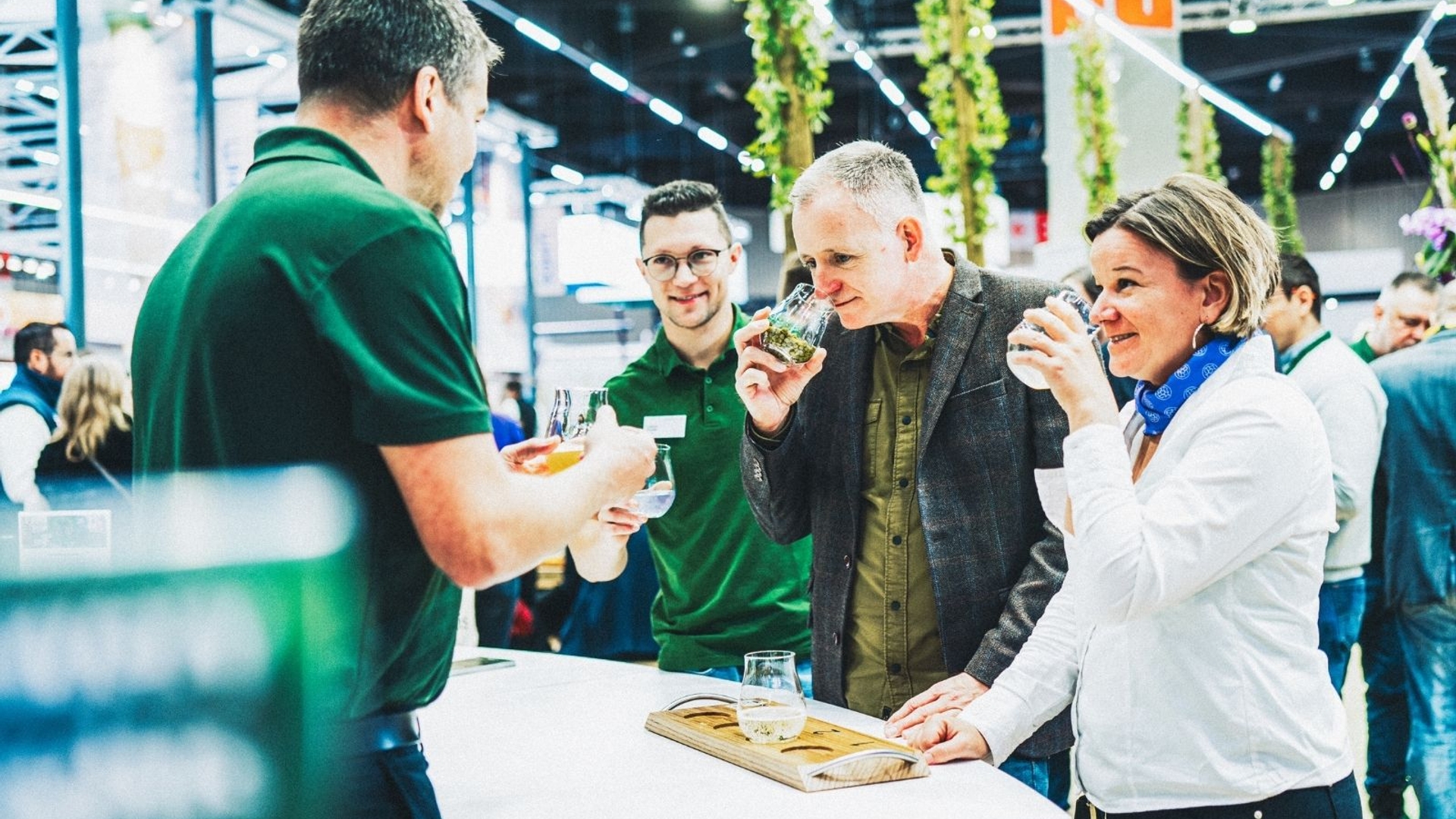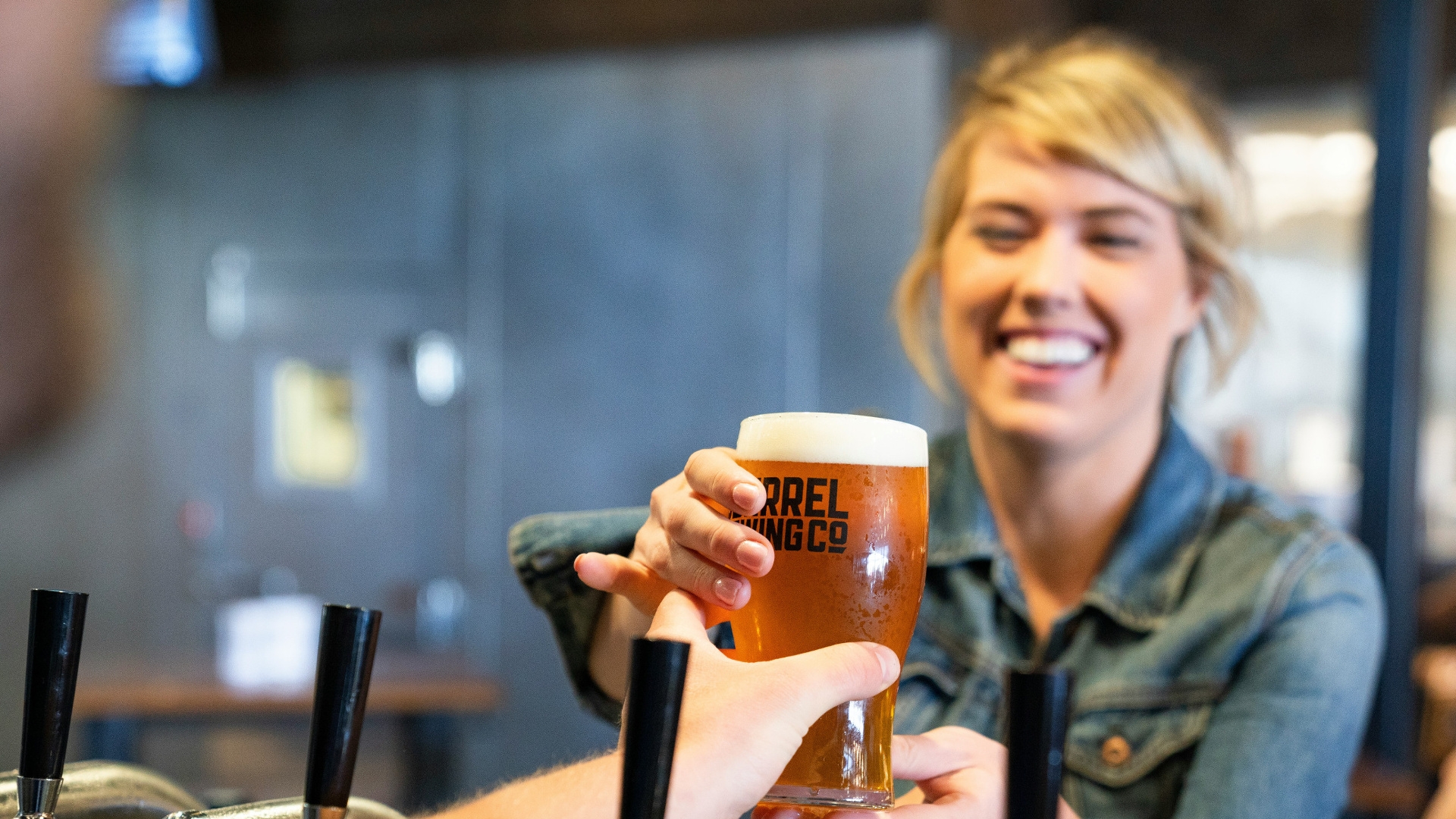A post by
Lucia Baier
Content Manager
YONTEX GmbH & Co. KG

Released on 01/07/2020Updated on 05/07/2024
A post by
Lucia Baier
Content Manager
YONTEX GmbH & Co. KG
You swirl the glass, sniff the beer, take your first sip sip – and you have an incredible number of flavours in your nose and on your tongue. But what exactly what exactly does it taste like, apart from words like bitter, sweet or hoppy? Is it more of a tangerine, pineapple or peach flavour? Until the first member of the group
dares to say: "Mango!" and you think: "That's right, definitely mango."
Marlene Speck-Waller works in the flavour and sensory department at Doemens and knows what it feels like. She was not a natural for sensory analysis, but first had to sharpen her senses for the diverse world of flavours. She is now a professional, works at the Doemens Academy in the area of flavour and sensory
and sensory analysis and teaches beer sommeliers as well as brewery employees. Because she is convinced that those who are fit in sensory analysis also brew better beer.
beer.
Marlene Speck-Waller
Almost all of them, actually. The appearance of the beer is of course the first thing we notice. Is it golden, dark or fiery red? Then we already have an idea in our heads of what to expect on the palate. When we take the first sip, the mouthfeel comes into play. Does it feel creamy like a wheat beer or tangy like a pilsner? And then, of course, the whole variety of flavours that we perceive with our taste and olfactory cells.
Speck-Waller
Yes, I'm quite sure of that. Good sensory analysis is also important for quality assurance. If you can identify the flavours of young beer, you know when the beer is the beer is fully matured. And it also helps them in the development of new varieties or when perfecting a recipe. I would recommend this, first describe your own beer as precisely as possible. Does does my dark beer taste more like caramel or chocolate? And where should the journey
go?
Speck-Waller
The best way to start is to walk through the world more consciously. For example sniffing the flowers in your own garden or pausing on a walk and asking yourself and ask yourself: What does it actually smell like here? It is also a good exercise to blindfolded to smell your own herbs and spices in the kitchen. Ideally, you should have a second person on hand to help you. Because it is really important to switch off your sense of sight and only trust your nose. trust your nose. It often takes several passes, but at some point you will recognise what you what you smell.
Speck-Waller
Identifying off-flavours is immensely important. Incidentally, this is best done in warm beer, i.e. at room temperature or slightly below. For example, there is the dimethyl sulphide, also known as DMS. It is reminiscent of the flavour of cooked vegetables or boiled corn and is an indication that the wort has not been boiled long enough boiled long enough or that there has been contamination with wort bacteria.
Diacetyl is also important, the so-called butter flavour. It indicates insufficient maturation or contamination of the beer. If I recognise these and and some other flavours in my beer, then I make sure that only excellent only excellent beer leaves my brewery. Or maybe I'm sitting in the pub pub, order a beer and then notice this butter flavour. Then I know that the dispensing system is not in order.
Speck-Waller
Anyone really can learn it and I am the best proof.

Investition
A post by Nina Anika Klotz

Cooling when the sun is shining
A post by Tobias Schlögl

Quality assurance
A post by Dr. Jürgen Hofmann

Tapped to perfection
A post by Dr. Johannes Tippmann